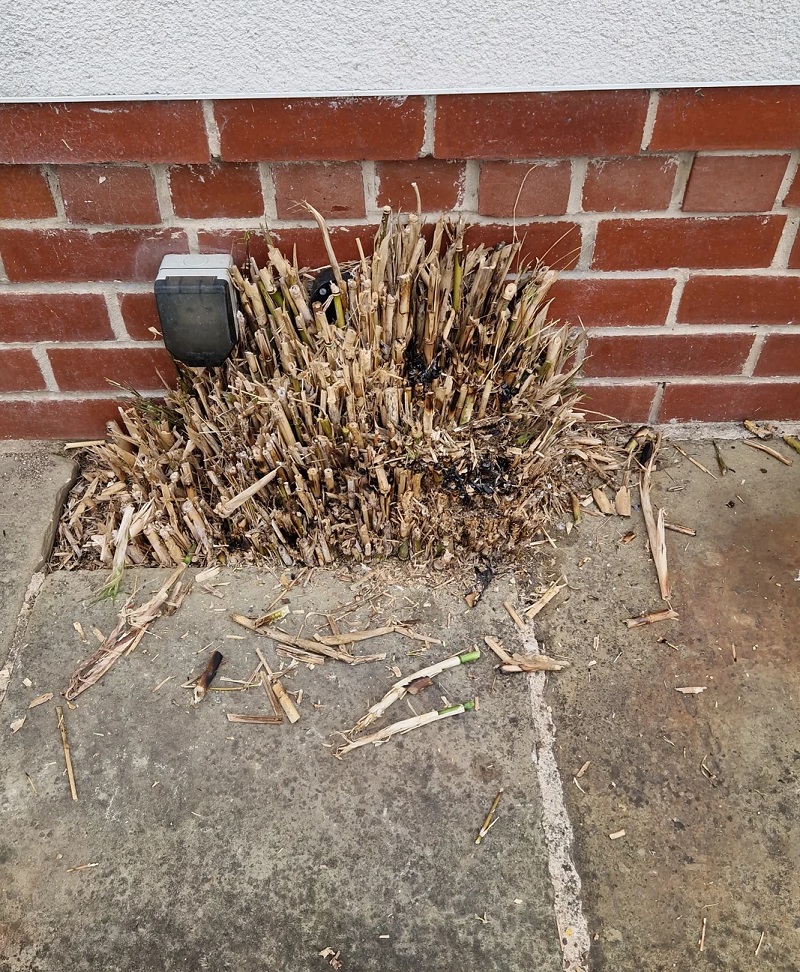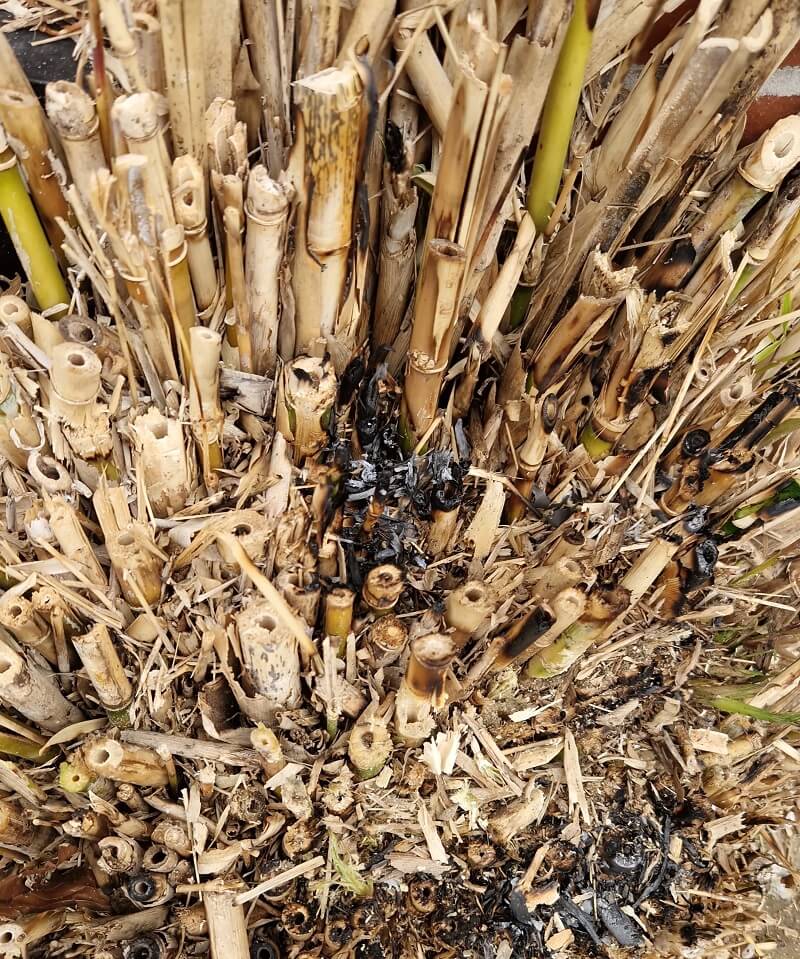While most invasive plant gardening mistakes can be avoided with a little research, similar mistakes can be unavoidable if previous homeowners have already made them.
This is the situation one Reddit user found themselves in, and they posted to r/gardening for advice. In the post, they asked for help in dealing with a stubborn, invasive bamboo plant left by the old homeowner in a dangerous spot near the foundation of the house.


"As you may be able to see I've tried to burn it, use a leaf [trimmer], and slowly clip at it," wrote the homeowner. "Any suggestions would be really appreciated!"
In response, users suggested intense and thorough uprooting of the bamboo to ensure its eradication — and that it never comes back.
"It will break through concrete from what I hear," replied one user on the bamboo's tenacity. "You need to remove every single root in the soil. Good luck."
Another person suggested, "Rip it back to dirt, pour a kilo of salt there and top with 2 liters of white vinegar."
"Then do an exorcism on it," came the next reply.
To save yourself and future homeowners the hassle of invasive species removal and other consequences like displacement of native species, reduction in biodiversity, and alteration of native ecosystems, it is best to plant native species.
Establishing native plant species in your yard is an excellent way to align with local weather and climate conditions. In their natural habitats, these plants not only survive but thrive. Their robust root systems help stabilize the soil, reducing erosion during heavy rains and floods.
Additionally, native plants typically receive adequate moisture from local rainfall, minimizing the need for extra watering compared to non-native species, which often require more maintenance.
Rewilding your yard with native plants also attracts local wildlife. Native flowers, for instance, attract pollinators that are crucial for maintaining healthy ecosystems and supporting any food crops you might be growing.
Interested in cultivating your very own native garden? Check out The Cool Down's guides on rewilding your yard and switching to a natural lawn for tips on how to get started.
Join our free newsletter for easy tips to save more and waste less, and don't miss this cool list of easy ways to help yourself while helping the planet.









